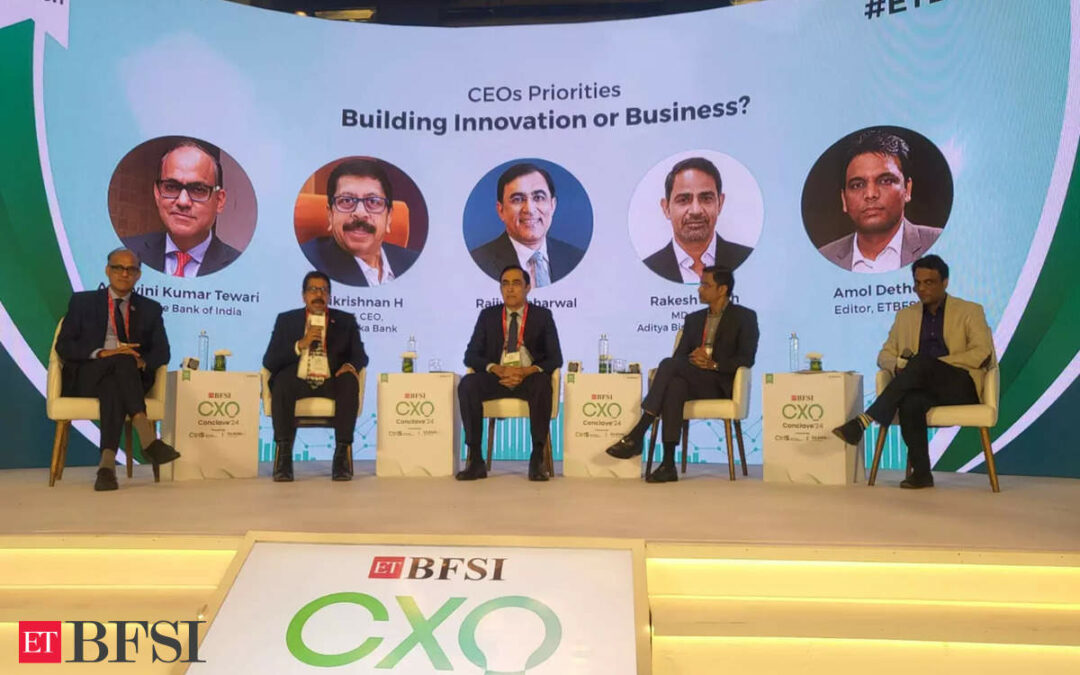Top banking and financial industry leaders feel innovation is the way forward, but it must be balanced with effective risk management and an understanding of evolving customer needs. By leveraging technology, forging partnerships, and focusing on customisation, financial institutions can navigate the complexities of the modern marketplace while staying ahead of the competition, they said at a panel discussion at the ETBFSI CXO Conclave.
Ashwini Kumar Tewari, MD of State Bank of India, set the tone by emphasising the balance between growth and business, noting, “It is not growth or business, it is both.” He said that remaining competitive in today’s market requires constant innovation, as features are easily replicated by competitors. He remarked, “If you want to build something that others can’t easily take — you have to continuously innovate, there should be a broader search.”
Innovation resides every single way but we have to just see what works and what doesn’t and take off accordingly, he said.
Tewari further underscored the challenges in small-ticket loan recovery due to regulatory restrictions, noting, “You can’t make collection calls before 9 and after 7 as per the regulator.” As the business grows, the need for constant innovation becomes inevitable, especially in overcoming such operational hurdles.
Srikrishnan H, MD & CEO of Karnataka Bank stressed that innovation extends beyond technology, affecting the overall business model. He remarked, “Innovation is not always related to technology; it is related to overall business.” He advocated for customised solutions for different customer segments, noting that while the overarching strategy may remain the same, the “wow factor” comes through tailored offerings. “There is no one size that fits all,” he said, highlighting the importance of adapting to specific customer needs.
Risk management: A top priority
Rajiv Sabharwal, MD & CEO of TATA Capital said risk management is the primary concern in today’s financial landscape. He pointed out that while larger organisations struggle with innovation, smaller companies and fintechs have led the charge in this area. “What we’ve learnt is innovation happens less with bigger organizations and happens more with smaller organizations,” he said, while emphasising the importance of partnerships with fintechs. However, these collaborations come with their challenges, particularly in tech integration and data management. Sabharwal also noted, “90% of data being collected is noise,” reinforcing the importance of filtering data to build effective lending models.Rakesh Singh, MD & CEO of Aditya Birla Finance Ltd highlighted how customer expectations and behaviour are driving innovation. He said, “Business has to go with innovation,” pointing out that the rapid changes in consumer behaviour require businesses to evolve their models. Singh said advancements in technology, such as video KYC and account aggregators allow for deeper insights into customer personas and enable the creation of more efficient scorecards. This, in turn, lowers the cost of delivering financial products.
“Earlier we were looking at income, banking behaviour and credit bureau, today i can do a KYC, video KYC, entire banking behaviour can be understood, GST information is there, account aggregator is there. Here whole personas and score cards can be created and analysed. Through manual underwriting cost of delivery was very high but with all this innovation that has happened we have built score cards and all and that helps us reach to the customers, we are able to provide the loans to the customers at a very low variable cost.











